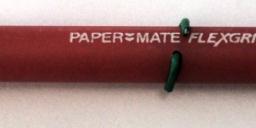SMD ASSEMBLY Guide - Dispensing and handling SMD parts
 Peter Jakacki
Posts: 10,193
Peter Jakacki
Posts: 10,193
I have been meaning to document some SMD assembly tips for quite some time. Once you realize just how easy it is you will wonder why you had such prior trepidations. Here is one rather quick guide to storing parts in small containers but more importantly, just how do you dispense and handled them easily? This link here gives you a quick guide.
You may wonder what this is then.
You may wonder what this is then.



Comments
My conclusion so far is that if they are not too ridiculously small they are easier to work with than messing around poking through hole components into a board. No flipping the board, trimming leads etc.
When your components are on tapes you don't have to mess around trying to read resistor colour codes and minute numbers on capacitors etc. You just know what is what.
I have yet to graduate to SMD chips though.
It sounds counter intuitive, but first tack the opposite side you want to work on with a small dab of solder, then place a large blob of solder on ALL of the pins on the side of the SMT IC you are working with. Then you migrate and work the solder downward with the soldering iron. (<-- hold the board in a way that gravity helps you out.) I have always had surprising results using this method down to 0.5mm pitch pads.
In the bad old days before I used solder paste that is kind of what I did. The small dab of solder was applied after lining the chip up, usually 80 or 100 pin QFPs at the time, and if it needed to be corrected then the dabs could reflowed but it was important to make sure the chip was flat on the pcb too. Then with a warm iron, just enough to melt the solder but not burn the flux I would pile up solder all down the legs. Then I would crank up the iron (medium chisel tip), hold the board up almost vertically and run the iron along it to reflow the solder and the excess would run down the pins and at the end you could flick it off the iron tip. Once the boards were washed they looked like they had been professionally machine assembled.
BUT, that is not the way to do it now. For QFPs I run a bead across the middle of all the pads, none of this fiddling with getting each pad nice and neat. When I put the chip on I press it down and just move it around a little to squish into the paste but make sure it is lined up and the paste helps to keep it in place too. With a cheap toaster oven that has been preheated I throw put the pcbs on a few layers of foil and sit them on the middle tray. Ok, That's enough for now.....I should document this too.